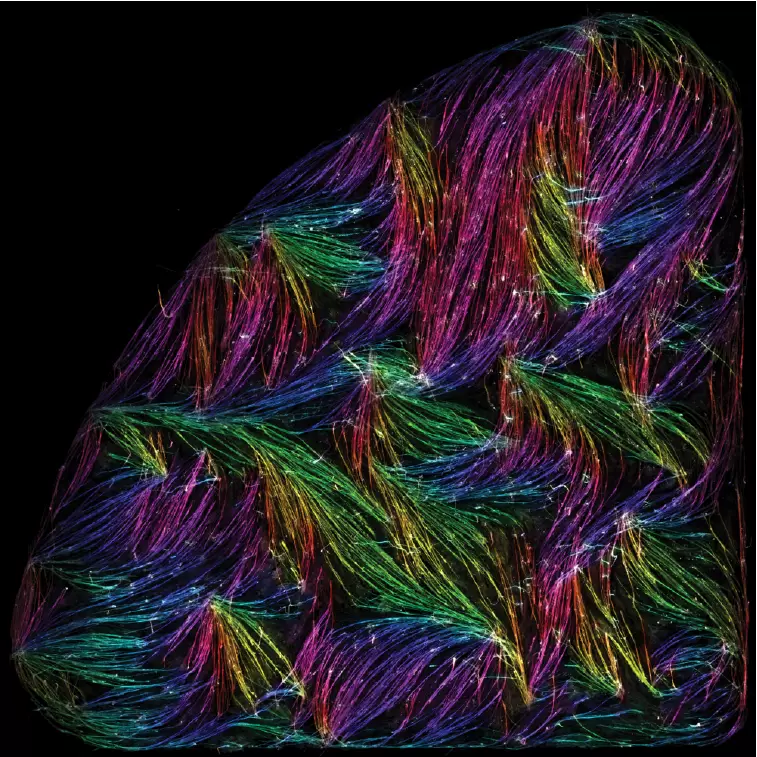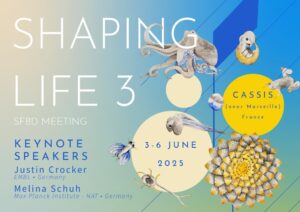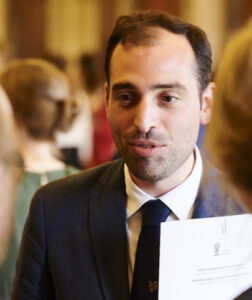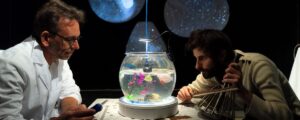Muscles can move our body parts in a defined direction because muscle cells are organised in elongated bundles between two skeletal elements. In a HFSP- and CENTURI-funded collaboration with the labs of Olivier Pourquié at Harvard Medical School, Olivier Theodoly at LAI Marseille, Bianca Habermann and Pierre-François Lenne at IBDM Marseille, Qiyan Mao and Achyuth Acharya from Frank Schnorrer’s group at IBDM found that human muscle cells self-organise into defined fiber bundles in vitro even without the presence of external cues. Instead, muscle cells communicate mechanically: bundle formation results in a rise of mechanical tension, which in turn triggers the simultaneous assembly of the contractile sarcomeres along the tension axis. As such, the future contraction axis is defined. These findings led to the hypothesis that tension coordinates muscle self-organisation from the tissue to the molecular scale.
Skeletal muscles are the most abundant tissue in the human body. Damages to the structural integrity of muscles or their regenerative potential often cause muscular dystrophies. In vivo, human skeletal muscles display a highly stereotypical architecture: centimetre-long muscle cells, called myofibers, are bundled together into one myofiber bundle connecting to two skeleton elements. This stable connection to the skeleton generates an optimal level of mechanical tension in each myofiber.
It was formerly believed that during development, human muscle bundles only form under the guidance of tendons or other connective tissues nearby. In this collaborative study, we set out to reconstruct the minimally sufficient condition for human muscle development in vitro. Interestingly, we found that human muscles spontaneously bundle-up in vitro without any external guidance factors. The stabilisation of these self-organised bundles coincides with the rise of mechanical tension and the formation of long chains of periodic micrometre-long sarcomeres within individual myofibers, suggesting a key role of mechanical tension, providing feedback, which steers muscle tissue self-organisation from the molecular to the tissue scale.
This is the first study on the development of human muscle from the Schnorrer group and thus far we only have glimpsed on how the mechanism of tension-driven self-organisation may work. We know that tension increases when bundling proceeds; we know that bundling correlates with a transcriptional transition resulting in an expression boost of sarcomeric proteins; and we know that myofiber ends stably attach to other myofiber ends using integrin-based attachments to form stable bundles. However, we do not yet know who produces tension and who senses tension to coordinate sarcomerogenesis with myofiber bundling. Molecular tension sensors in key sarcomeric components may provide future insights.
Our human iPSC-derived skeletal muscle culture system and analysis pipeline can be readily expanded to incorporate patient-derived muscle cells for disease modelling. When combined with myofibers defective in titin or integrin, this pipeline can offer molecular insights into the impact of human titinopathies and integrin-dependent pathologies on mechanical tension and myofibrillogenesis in the future.

To know more
Figure legend
Human myofibers self-organise into large bundles in vitro. The Fiji plugin OrientationJ was used to colour-code the orientation of the individual myofibers. Note the large bundles identified by similar colours.




